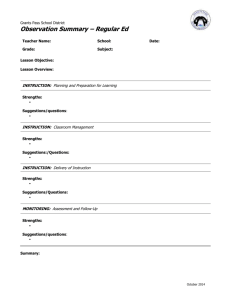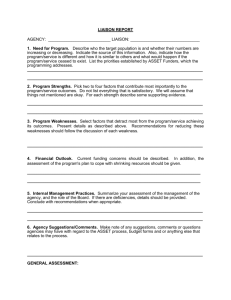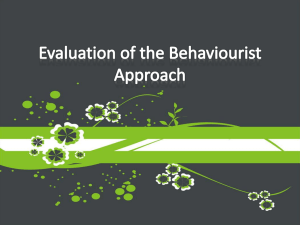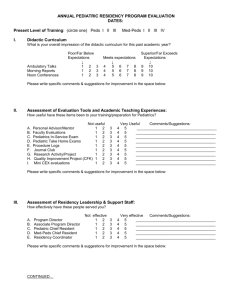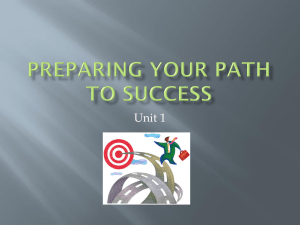Organizing the Racing, Cluttered Mind
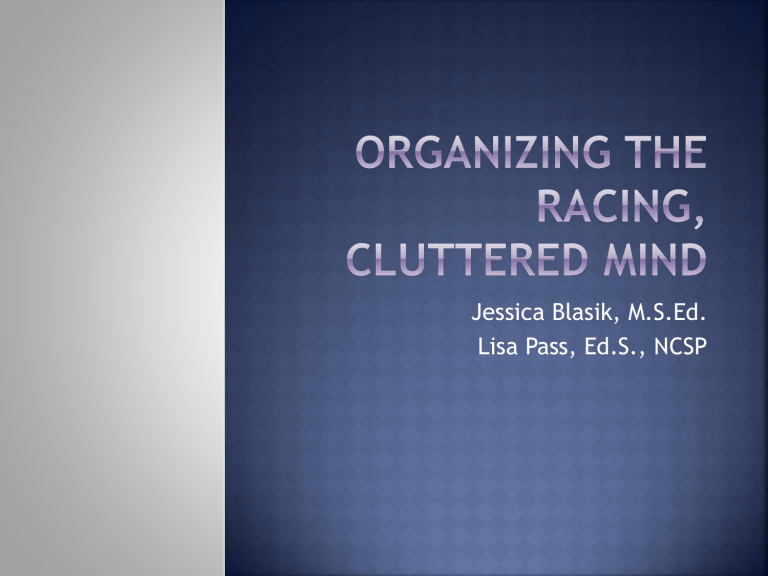
Jessica Blasik, M.S.Ed.
Lisa Pass, Ed.S., NCSP
Understand some neurodevelopmental reasons why children and adolescents may struggle to stay organized
Identify some of the most common Executive
Functions and how they influence behavior
Determine you and your child’s EF strengths and weaknesses
Learn a problem solving technique to use to plan and implement your own behavioral interventions at home
Executive
Functions: mental processes that control and regulate behaviors and abilities
Orchestra Conductor/CEO
Organization
Planning
Initiation
Shifting
Working Memory
Emotional Control
Self-Monitoring
Inhibition
Neuronal pruning (decrease in gray matter) occurs as brain becomes more “hard wired”
White matter increases as associations are made throughout the brain
Skills and behaviors practiced consistently during late childhood and early adolescence have a higher probability of being hard-wired into the adult brain
Some evidence that gifted children have larger parietal and frontal lobe areas
fMRI studies indicate that gifted children may have more efficient connections between frontal lobes and other areas of the brain (including emotion centers)
More widely spread activation when problem solving
Brain activation in gifted (a) and non-gifted (b) students
Mental rotation task
Asynchronous
Development: uneven intellectual, physical, and emotional development.
Most noticeable in individuals with higher IQs.
Some cognitive abilities may be much more developed than others
Executive Functions normally develop at different times, so may appear asynchronous
-“My teachers saw me at once backward and precocious, reading books beyond my years and yet at the bottom of the Form. Winston Churchill
-“The servants all thought that young
Isaac was foolish, and his mother did not know what to do with him…”
-“I used to take these maths tests which were supposed to be done in one period and it took me not just that period but the next one, which was a play period and sometimes the one beyond that…”
Roger Penrose, Cambridge Math
Professor
From Isaac Newton, The Greatest
Scientist of All Time
Complete the Executive Function Parent and
Student Questionnaire
Score Each Section
Higher scores indicate particular strengths, low scores weaknesses
Write down the three highest and three lowest scores to get a “profile”
Were there any surprises, either for your profile or your child’s?
Were your profile and your child’s profile the same, or different?
How might the differences or similarities between your profiles effect how you work with your child?
How do these profiles effect family functioning?
Let’s take a lesson from the Hecks
When your strengths are your child’s weaknesses
Collaborate with child to get buy-in
Be creative in using your strengths to enhance their skills
Make a point to identify where you are weak and your child is strong to maintain morale
When needed, lend them your strengths
When your weaknesses are similar to your child’s weaknesses
Collaborate with your child
Brainstorm solutions together
Share stories from your past as lessons
Get others to help
Executive
Functions: mental processes that control and regulate behaviors and abilities
Self-Monitoring
Organization
Initiation
Shifting
Planning
Recognizing what is going on inside one’s own mind, body, environment, relationships.
Involves self monitoring and metacognition related to:
tasks and environment interpersonal awareness own performance
What adults can do to help
Align external demands with internal desires
Set small, attainable goals for each activity, task, or class
Student based suggestions
Have your child learn to check in with him/herself by asking: What am I doing right now? What am I supposed to be doing right now?
The ability to create and maintain systems to keep track of information or materials
Examples
Cleaning room
Keeping binders neat and organized
Organizing thoughts onto paper
Keeping track of assignments
Taking effective notes
Strategies for Keeping Things Tidy
Use a bin system or folder system
Take a picture of what “clean” looks like
Break down into manageable, small steps
Getting Thoughts on Paper
Cognitive Mapping
Keeping a daily and weekly planner
What Parents Can Do
Collaborate with students when developing a strategy
Be flexible and ready to brainstorm
Make it fun, whenever possible
Prepare to choose your battles
“Constantly late for school, losing his books, and papers and various other things into which I need not enter– he is so regular in his irregularity in every way that I don’t know what to do.”
Winston Churchill’s Principal
The ability to begin a task or activity and to independently generate ideas, responses, or problem solving strategies
Getting going, getting started on tasks
Knowing where to begin, what to do, who to ask
This is NOT non-compliance or disinterest in the task, its not knowing where to start
What adults can do to help
Additional verbal and visual prompts
Demonstrate the first problem of a work sheet
Break tasks down step-by-step to reduce feelings of being overwhelmed
Write them down on index cards or in a notebook
Student based suggestions
Have your child create “to do” lists or create
“cookbook” with lists of steps for each activity
Organizing thoughts before beginning an activity
The ability to move freely from one situation, activity, or aspect of a problem to another, in reaction to internal or external cues
Making transitions
Tolerating change
Flexible problem solving
Switching or alternating attention
Change focus from one topic to another
What adults can do to help
Consistent routines, schedules, and activities
Make minor changes and help your child respond
Use visual organizers and planners to represent the sequence of events throughout the day
Student based suggestions
Slightly alter the order of everyday activities
Working with two or three familiar activities and alternate them
Practice solving problems in different ways
The ability to manage future oriented tasks
Anticipation of future events
Setting goals
Developing appropriate sequential steps ahead of time
Determining the most effective method or steps to reach a goal
Keeping track of time and steps to complete tasks and reach goals
What adults can do to help
Have binder with steps for activities, assignments, tasks
Ask questions like: how long do you think this will take you to finish?
Demonstrate ways to plan
Discuss plans for the day; think out loud and model planning with multiple steps
Student based suggestions
Practice setting a goal and lay out steps to reach the goal
Involve your child in planning events, such as birthday parties, cooking dinner, or scheduling activities
Teach deficient skills rather than assuming they’ll develop naturally
Consider developmental level in your plan
Use your child’s innate drive for mastery and control
Over-ride the desire to quit
Celebrate successes!
Take a deep breath: stress decreases frontal lobe activity
Identify a problem behavior
Set an overall goal and several smaller benchmark goals
Outline steps needed to reach the goal
Turn steps into a list, a checklist, or short set of rules
Supervise and Reward
Fade Supervision and reward
Well thought out rewards have an energizing effect on behavior
Not a bribe, but a way to help a child gain motivation when it is not yet internal
Not meant to be permanent
Should be collaborative with child, and open to adjustment throughout
Can be tangible, or intangible
Needs to be consistent
Problem solving practice in groups
Re-watch the Hecks, choose one character, and take 5 minutes to use the problem solving model on the worksheet to define the problem
Books
Late, Lost, and Unprepared by Joyce Cooper-Kahn & Laurie Dietzel
Smart but Scattered by Peg Dawson & Richard Guare
The Organized Student: Teaching Children the Skills for Success in School and Beyond by D. Goldberg
Assessment and Intervention for Executive Function Difficulties by G. McClosky, L.
Perkins, & B. Van Divner
Websites
LDonline.org
http://www.ldinfo.com/executive_functioning.htm
InterventionCentral.com

